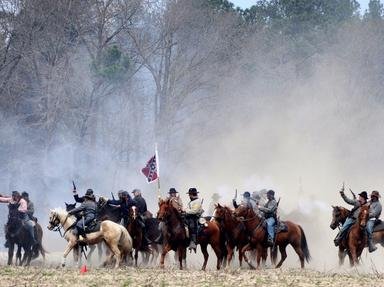
Block up the Hall Trivia Quiz
U.S. Civil War Sieges
Welcome! In this quiz, you are presented with fifteen historical sieges. Only ten of them happened during the American Civil War. Your task is to identify them. Enjoy!
A collection quiz
by DeepHistory.
Estimated time: 3 mins.